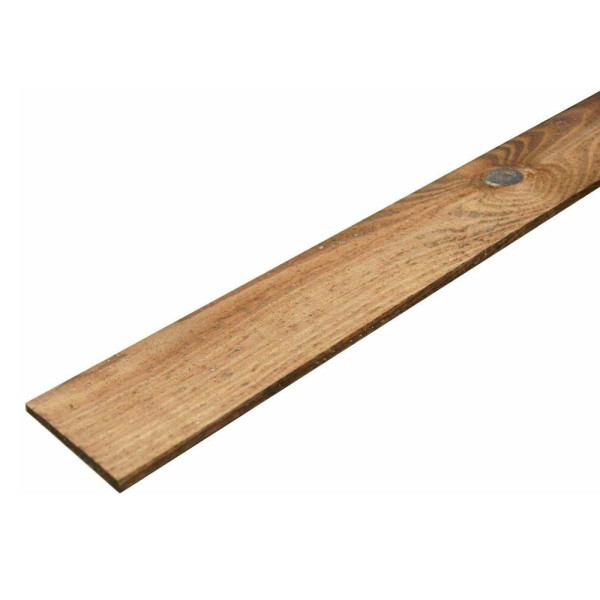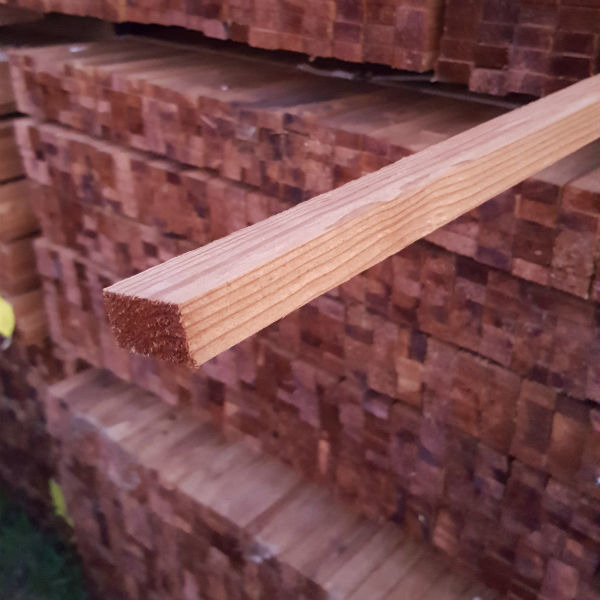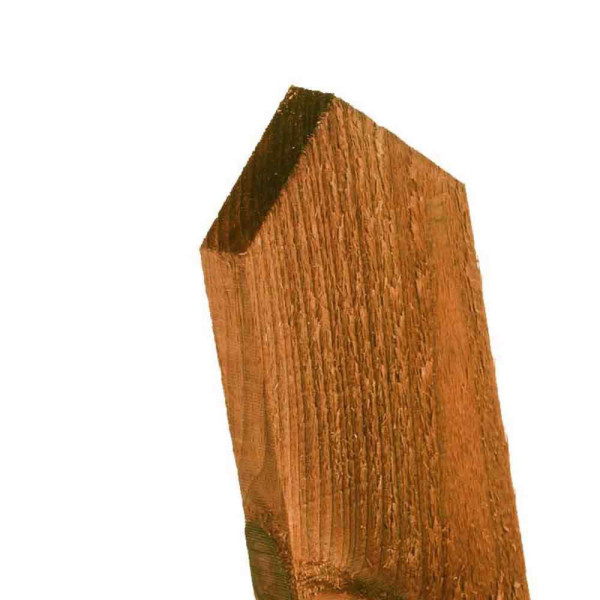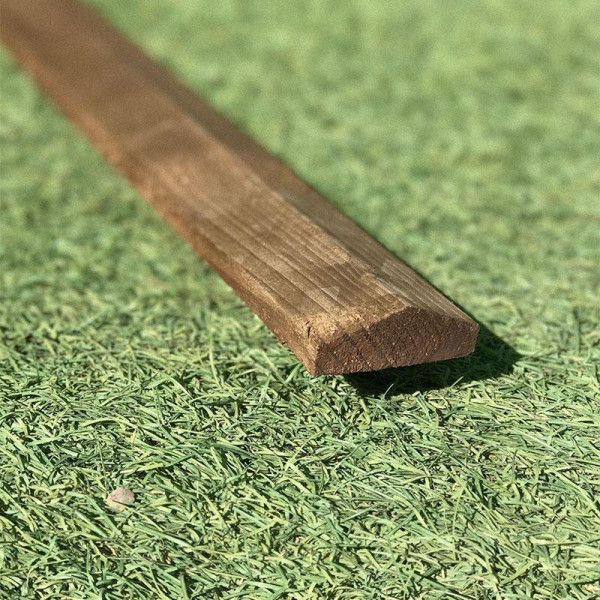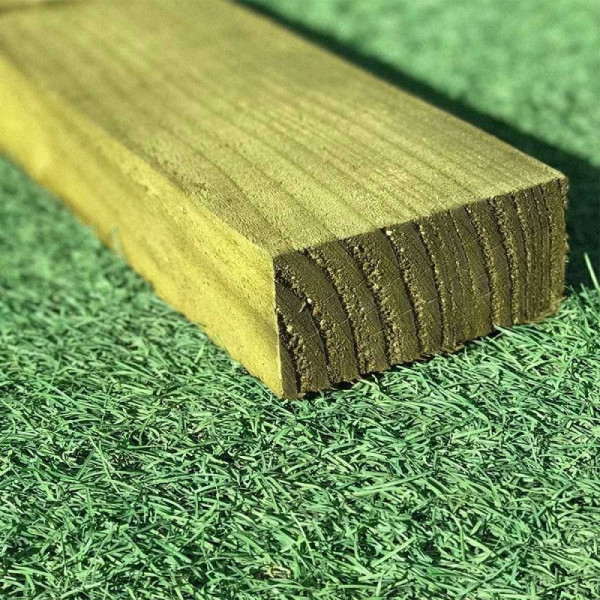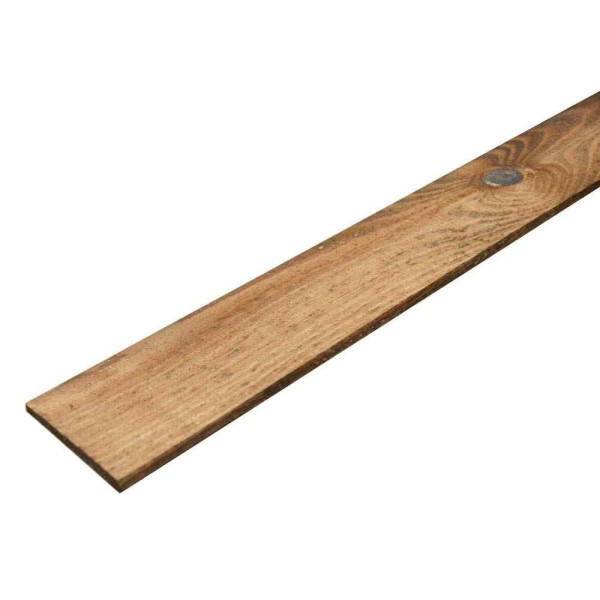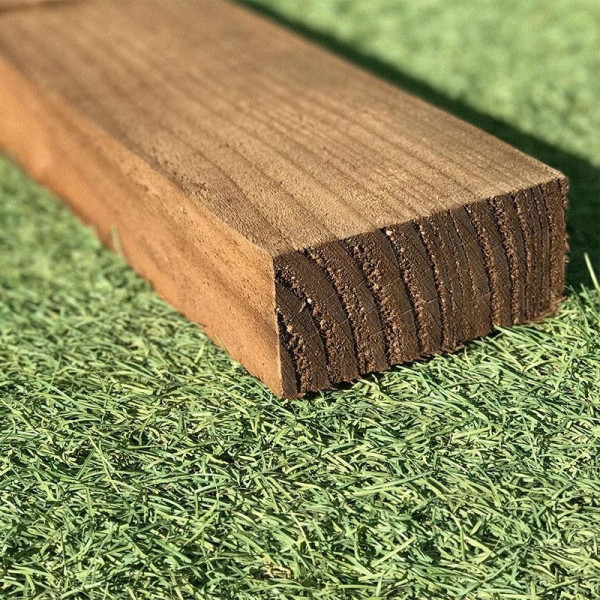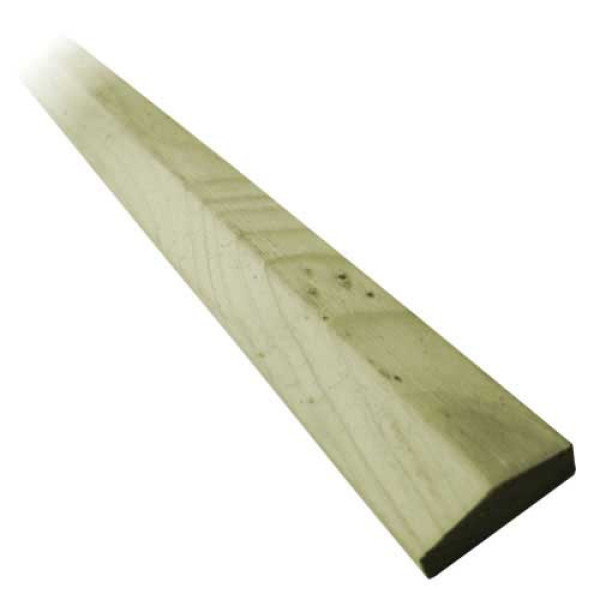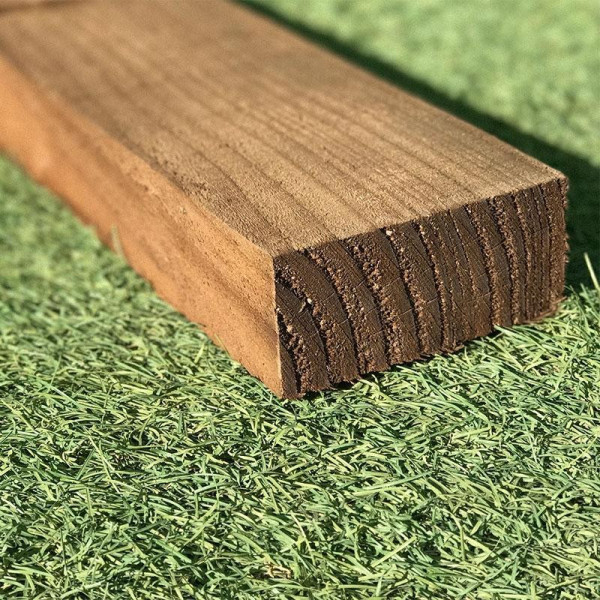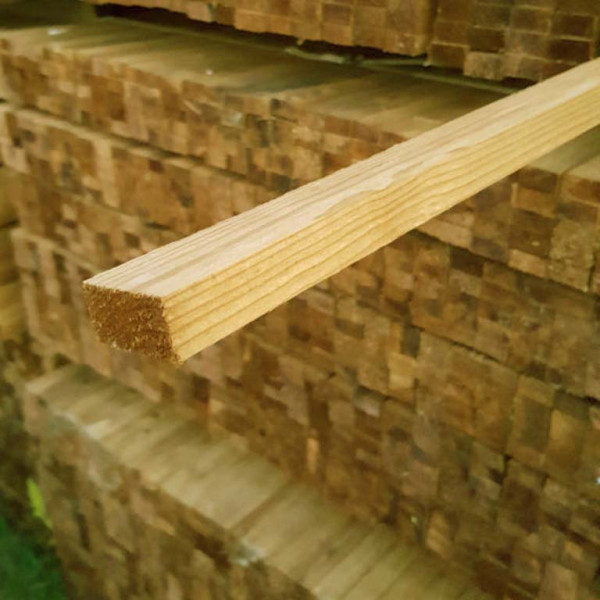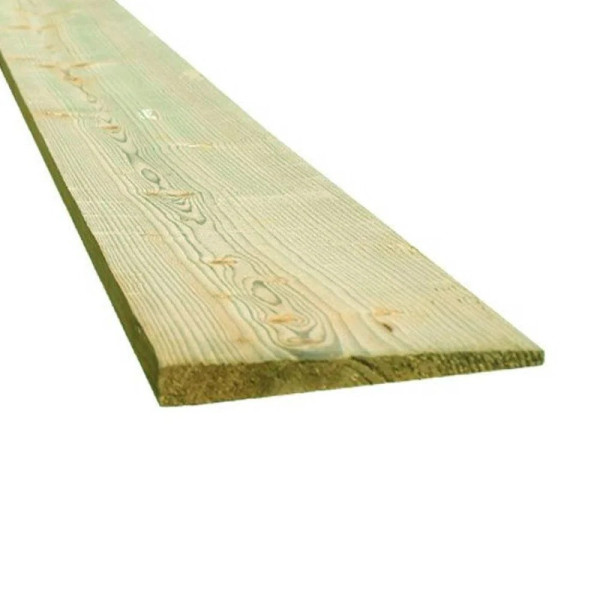Timber
Timber is an essential material for construction, landscaping, and various DIY projects. Its versatility, sustainability, and natural beauty make it a favourite choice for many. At East Coast Fencing, we provide a wide range of high-quality timber products to meet all your needs. Whether you're building a new deck, constructing a fence, or crafting custom furniture, our timber selection offers the perfect solution. Explore the different types of timber we offer and discover how they can be used in your next project.
Timber's strength and durability make it ideal for structural applications. Its natural resistance to weather conditions ensures longevity, even in outdoor settings. Additionally, timber's aesthetic appeal adds a touch of warmth and sophistication to any design. With proper treatment and maintenance, timber can last for decades, providing excellent value for money. Our timber products come from sustainably managed forests, ensuring that you are making an environmentally responsible choice.
One of the greatest benefits of timber is its ease of use. It can be easily cut, shaped, and assembled, making it suitable for both professionals and DIY enthusiasts. Timber's lightweight nature allows for easy transport and handling, reducing labour costs and effort. Furthermore, timber's versatility means it can be used in a wide range of applications, from basic framing to intricate joinery. With our premium timber products, you can achieve professional results with ease.
Another advantage of using timber is its insulating properties. Timber naturally regulates temperature and humidity, creating a comfortable and energy-efficient environment. This makes it an excellent choice for building homes, offices, and other structures. Timber also has sound-absorbing qualities, reducing noise levels and enhancing acoustic performance. By choosing timber, you can create spaces that are not only visually appealing but also comfortable and conducive to well-being.
In addition to its technical benefits, timber offers a timeless and classic aesthetic. Its natural grain patterns and warm tones add character and charm to any project. Timber can be stained, painted, or left in its natural state, allowing for endless design possibilities. Whether you prefer a rustic, traditional look or a sleek, modern finish, timber can be customised to suit your style. With our wide selection of timber products, you can bring your vision to life.
Feather Edge Boards
Feather edge boards are a popular choice for fencing and cladding applications. They are designed with one edge thinner than the other, allowing them to overlap neatly and create a sturdy, weather-resistant barrier. These boards are ideal for creating traditional closeboard fencing, providing privacy and security for your property. Our feather edge boards are pressure-treated for enhanced durability and protection against rot and insect damage.
Feather edge boards can be easily installed using timber posts and rails. The overlapping design ensures a tight fit, minimising gaps and preventing water ingress. This makes them suitable for use in all weather conditions. Additionally, feather edge boards can be painted or stained to match your existing décor, offering a versatile solution for both residential and commercial properties. With our high-quality feather edge boards, you can achieve a professional finish that stands the test of time.
In addition to fencing, feather edge boards can be used for cladding buildings and structures. Their robust construction provides excellent protection against the elements, while their attractive appearance enhances the overall aesthetic. Feather edge boards can be installed vertically or horizontally, depending on your design preference. They are also available in various lengths and thicknesses, allowing you to choose the perfect fit for your project.
Feather edge boards are an eco-friendly choice for your construction needs. They are made from sustainably sourced timber, ensuring minimal environmental impact. By choosing feather edge boards, you are supporting responsible forestry practices and contributing to the preservation of natural resources. Our feather edge boards are also recyclable and biodegradable, making them an environmentally responsible option.
When it comes to fencing and cladding, feather edge boards offer a cost-effective solution without compromising on quality. Their simple installation process and long-lasting performance make them a favourite among homeowners and contractors alike. With our wide range of feather edge boards, you can find the perfect match for your project and enjoy the benefits of a durable, attractive, and sustainable material.
Timber Battens
Timber battens are essential components in construction and landscaping projects. They are versatile, strong, and easy to work with, making them suitable for a wide range of applications. Timber battens are typically used as support structures for cladding, roofing, and flooring. Our timber battens are made from high-quality, sustainably sourced wood, ensuring durability and environmental responsibility.
One of the primary uses of timber battens is in roofing applications. They provide a solid framework for attaching roof tiles or shingles, ensuring stability and weather resistance. Timber battens are also used in wall cladding systems, where they act as a support for the cladding material. This creates a ventilated cavity that helps regulate temperature and moisture levels, improving the overall performance of the building envelope.
Timber battens are available in various sizes and profiles to suit different applications. They can be easily cut to length and fixed in place using nails or screws. Timber battens are also compatible with a range of cladding materials, including timber, metal, and composite panels. This versatility makes them an ideal choice for both new builds and renovation projects.
In addition to their structural uses, timber battens can be employed in landscaping projects. They are commonly used to create garden trellises, plant supports, and raised beds. Timber battens are also useful for constructing decking and pergolas, providing a sturdy framework for these outdoor features. Our timber battens are pressure-treated for enhanced durability and resistance to rot and insect damage.
Timber battens are an eco-friendly choice for your construction and landscaping needs. They are made from renewable resources and are recyclable at the end of their life. By choosing timber battens, you are supporting sustainable forestry practices and reducing your environmental impact. Our timber battens are also cost-effective, offering excellent value for money without compromising on quality.
C16 Construction Timber
C16 construction timber is a popular choice for structural applications due to its strength and durability. It is graded to meet specific performance standards, ensuring reliable and consistent quality. C16 construction timber is suitable for a wide range of building projects, including framing, flooring, and roofing. Our C16 construction timber is sourced from sustainably managed forests, providing an environmentally responsible option for your construction needs.
One of the key advantages of C16 construction timber is its high strength-to-weight ratio. This makes it ideal for use in load-bearing structures, where it provides excellent stability and support. C16 construction timber is also resistant to bending and warping, ensuring long-lasting performance. Additionally, it can be easily cut, drilled, and nailed, making it a versatile choice for both professionals and DIY enthusiasts.
C16 construction timber is treated with preservatives to protect against rot, decay, and insect damage. This enhances its durability and extends its lifespan, making it suitable for both indoor and outdoor applications. Our C16 construction timber is available in various sizes and lengths, allowing you to choose the perfect fit for your project. With its superior strength and durability, C16 construction timber is a reliable choice for any construction project.
In addition to its structural uses, C16 construction timber can be employed in a variety of other applications. It is commonly used for making garden furniture, decking, and pergolas, where its strength and resistance to weathering are particularly beneficial. C16 construction timber can also be used for creating bespoke joinery and cabinetry, providing a strong and stable material for these projects.
C16 construction timber is an eco-friendly choice for your building needs. It is sourced from sustainably managed forests, ensuring minimal environmental impact. By choosing C16 construction timber, you are supporting responsible forestry practices and contributing to the preservation of natural resources. Our C16 construction timber is also recyclable and biodegradable, making it an environmentally responsible option.
When it comes to construction projects, C16 construction timber offers a cost-effective solution without compromising on quality. Its high strength and durability make it an ideal choice for a wide range of applications, from structural framing to outdoor furniture. With our premium C16 construction timber, you can achieve professional results and enjoy the benefits of a strong, reliable, and sustainable material.
Square Rails
Square rails are versatile and practical components for a variety of construction and landscaping projects. They are typically used for creating fences, gates, and balustrades, providing a sturdy and attractive framework. Our square rails are made from high-quality timber, ensuring durability and a smooth finish. Available in various sizes and lengths, our square rails offer a flexible solution for your building needs.
One of the primary uses of square rails is in fencing applications. They provide a solid framework for attaching fence panels, pickets, or wire mesh, ensuring stability and strength. Square rails can be easily cut to length and fixed in place using nails or screws. Their smooth surface and uniform dimensions make them easy to work with, allowing for precise and professional results.
Square rails are also ideal for creating gates and balustrades. Their robust construction provides excellent support for these structures, ensuring safety and durability. Square rails can be painted or stained to match your existing décor, offering a versatile solution for both residential and commercial properties. With our high-quality square rails, you can create attractive and functional outdoor features that stand the test of time.
In addition to their structural uses, square rails can be employed in a variety of other applications. They are commonly used for making garden furniture, raised beds, and planters, where their strength and resistance to weathering are particularly beneficial. Square rails can also be used for creating bespoke joinery and cabinetry, providing a strong and stable material for these projects.
Square rails are an eco-friendly choice for your construction and landscaping needs. They are made from sustainably sourced timber, ensuring minimal environmental impact. By choosing square rails, you are supporting responsible forestry practices and contributing to the preservation of natural resources. Our square rails are also recyclable and biodegradable, making them an environmentally responsible option.
When it comes to construction projects, square rails offer a cost-effective solution without compromising on quality. Their simple installation process and long-lasting performance make them a favourite among homeowners and contractors alike. With our wide range of square rails, you can find the perfect match for your project and enjoy the benefits of a durable, attractive, and sustainable material.
Picket Pales
Picket pales are a classic choice for creating attractive and functional fences. They are designed with a pointed top, adding a touch of charm and character to any property. Picket pales are ideal for creating traditional picket fences, providing a decorative and secure barrier. Our picket pales are made from high-quality timber, ensuring durability and a smooth finish.
One of the primary uses of picket pales is in fencing applications. They provide a solid framework for attaching fence panels, pickets, or wire mesh, ensuring stability and strength. Picket pales can be easily cut to length and fixed in place using nails or screws. Their smooth surface and uniform dimensions make them easy to work with, allowing for precise and professional results.
Picket pales are also ideal for creating gates and balustrades. Their robust construction provides excellent support for these structures, ensuring safety and durability. Picket pales can be painted or stained to match your existing décor, offering a versatile solution for both residential and commercial properties. With our high-quality picket pales, you can create attractive and functional outdoor features that stand the test of time.
In addition to their structural uses, picket pales can be employed in a variety of other applications. They are commonly used for making garden furniture, raised beds, and planters, where their strength and resistance to weathering are particularly beneficial. Picket pales can also be used for creating bespoke joinery and cabinetry, providing a strong and stable material for these projects.
Picket pales are an eco-friendly choice for your construction and landscaping needs. They are made from sustainably sourced timber, ensuring minimal environmental impact. By choosing picket pales, you are supporting responsible forestry practices and contributing to the preservation of natural resources. Our picket pales are also recyclable and biodegradable, making them an environmentally responsible option.
When it comes to construction projects, picket pales offer a cost-effective solution without compromising on quality. Their simple installation process and long-lasting performance make them a favourite among homeowners and contractors alike. With our wide range of picket pales, you can find the perfect match for your project and enjoy the benefits of a durable, attractive, and sustainable material.
Cant Rails
Cant rails are essential components for creating robust and durable fencing systems. They are designed with a chamfered edge, allowing for a neat and secure fit with fence panels or boards. Cant rails provide excellent support and stability for fencing structures, ensuring long-lasting performance. Our cant rails are made from high-quality timber, ensuring durability and a smooth finish.
One of the primary uses of cant rails is in fencing applications. They provide a solid framework for attaching fence panels, pickets, or wire mesh, ensuring stability and strength. Cant rails can be easily cut to length and fixed in place using nails or screws. Their smooth surface and uniform dimensions make them easy to work with, allowing for precise and professional results.
Cant rails are also ideal for creating gates and balustrades. Their robust construction provides excellent support for these structures, ensuring safety and durability. Cant rails can be painted or stained to match your existing décor, offering a versatile solution for both residential and commercial properties. With our high-quality cant rails, you can create attractive and functional outdoor features that stand the test of time.
In addition to their structural uses, cant rails can be employed in a variety of other applications. They are commonly used for making garden furniture, raised beds, and planters, where their strength and resistance to weathering are particularly beneficial. Cant rails can also be used for creating bespoke joinery and cabinetry, providing a strong and stable material for these projects.
Cant rails are an eco-friendly choice for your construction and landscaping needs. They are made from sustainably sourced timber, ensuring minimal environmental impact. By choosing cant rails, you are supporting responsible forestry practices and contributing to the preservation of natural resources. Our cant rails are also recyclable and biodegradable, making them an environmentally responsible option.
When it comes to construction projects, cant rails offer a cost-effective solution without compromising on quality. Their simple installation process and long-lasting performance make them a favourite among homeowners and contractors alike. With our wide range of cant rails, you can find the perfect match for your project and enjoy the benefits of a durable, attractive, and sustainable material.
Panel Capping
Panel capping is an essential component for creating neat and finished fencing systems. It is designed to fit on top of fence panels, providing a protective and decorative edge. Panel capping enhances the overall appearance of your fence while protecting it from weathering and damage. Our panel capping is made from high-quality timber, ensuring durability and a smooth finish.
One of the primary uses of panel capping is in fencing applications. It provides a neat and secure edge for fence panels, ensuring stability and protection. Panel capping can be easily cut to length and fixed in place using nails or screws. Its smooth surface and uniform dimensions make it easy to work with, allowing for precise and professional results.
Panel capping is also ideal for creating gates and balustrades. Its robust construction provides excellent support for these structures, ensuring safety and durability. Panel capping can be painted or stained to match your existing décor, offering a versatile solution for both residential and commercial properties. With our high-quality panel capping, you can create attractive and functional outdoor features that stand the test of time.
In addition to its structural uses, panel capping can be employed in a variety of other applications. It is commonly used for making garden furniture, raised beds, and planters, where its strength and resistance to weathering are particularly beneficial. Panel capping can also be used for creating bespoke joinery and cabinetry, providing a strong and stable material for these projects.
Panel capping is an eco-friendly choice for your construction and landscaping needs. It is made from sustainably sourced timber, ensuring minimal environmental impact. By choosing panel capping, you are supporting responsible forestry practices and contributing to the preservation of natural resources. Our panel capping is also recyclable and biodegradable, making it an environmentally responsible option.
When it comes to construction projects, panel capping offers a cost-effective solution without compromising on quality. Its simple installation process and long-lasting performance make it a favourite among homeowners and contractors alike. With our wide range of panel capping, you can find the perfect match for your project and enjoy the benefits of a durable, attractive, and sustainable material.
Half Round Rails
Half round rails are versatile and practical components for a variety of construction and landscaping projects. They are typically used for creating fences, gates, and balustrades, providing a sturdy and attractive framework. Our half round rails are made from high-quality timber, ensuring durability and a smooth finish. Available in various sizes and lengths, our half round rails offer a flexible solution for your building needs.
One of the primary uses of half round rails is in fencing applications. They provide a solid framework for attaching fence panels, pickets, or wire mesh, ensuring stability and strength. Half round rails can be easily cut to length and fixed in place using nails or screws. Their smooth surface and uniform dimensions make them easy to work with, allowing for precise and professional results.
Half round rails are also ideal for creating gates and balustrades. Their robust construction provides excellent support for these structures, ensuring safety and durability. Half round rails can be painted or stained to match your existing décor, offering a versatile solution for both residential and commercial properties. With our high-quality half round rails, you can create attractive and functional outdoor features that stand the test of time.
In addition to their structural uses, half round rails can be employed in a variety of other applications. They are commonly used for making garden furniture, raised beds, and planters, where their strength and resistance to weathering are particularly beneficial. Half round rails can also be used for creating bespoke joinery and cabinetry, providing a strong and stable material for these projects.
Half round rails are an eco-friendly choice for your construction and landscaping needs. They are made from sustainably sourced timber, ensuring minimal environmental impact. By choosing half round rails, you are supporting responsible forestry practices and contributing to the preservation of natural resources. Our half round rails are also recyclable and biodegradable, making them an environmentally responsible option.
When it comes to construction projects, half round rails offer a cost-effective solution without compromising on quality. Their simple installation process and long-lasting performance make them a favourite among homeowners and contractors alike. With our wide range of half round rails, you can find the perfect match for your project and enjoy the benefits of a durable, attractive, and sustainable material.
Timber Delivered
Our delivery service covers Bedfordshire, Berkshire, Buckinghamshire, Cambridgeshire, East Sussex, Essex, Greater London, Hertfordshire, Kent, Norfolk, Northamptonshire, Oxfordshire, Suffolk, Surrey, and West Sussex.
Pressure Treated Timber
Timber is a versatile material. It's a popular choice for garden fencing.
But why is that?
Timber offers a blend of aesthetic appeal and durability. It's a sustainable choice that enhances the beauty of any garden.
This guide will delve into the world of timber construction. We'll focus on Feather Edge Boards, C16 Construction Timber, Timber Battens, Square Rails, Panel Capping, Cant Rails, and Picket Pales.
We aim to educate homeowners. We'll guide you through the selection process, installation tips, and maintenance advice.
We'll also highlight the benefits of choosing high-quality timber. It's not just about looks. It's about the security and longevity of your fencing.
East Coast Fencing is a trusted supplier of garden fencing. We offer durable, aesthetically pleasing options.
Our high Trustpilot rating speaks volumes. Over 10,000 5-star reviews with a 4.9 rating.
We understand the needs of homeowners and professional landscapers. We're here to help you make the best choice for your garden.
So, let's dive into the world of timber construction. Let's explore the unique selling points of our offerings.
Welcome to our comprehensive timber construction guide.
Understanding Timber in Garden Fencing
Timber is a cornerstone of garden fencing. Its versatility and natural charm make it a favourite among homeowners.
Introduction to Timber as a Material
Timber's strength is a key reason for its popularity. It provides sturdy support and resilience.
Moreover, timber is adaptable. It can be cut and shaped to fit various designs and purposes.
Sustainability and Environmental Benefits
Using timber is a sustainable choice. When sourced responsibly, it has a minimal impact on the environment.
Trees, from which timber is derived, help reduce carbon emissions. They absorb carbon dioxide and release oxygen, fostering ecological balance.
Opting for timber supports renewable resources. It's important to choose certified timber from sustainable forests. This practice ensures responsible consumption.
Timber's Aesthetic Appeal
Timber has a timeless beauty. Its natural grains and textures add warmth to any garden setting.
Each piece of timber is unique. It offers variations in colour and pattern, creating interest and depth in fence design.
Timber also ages gracefully. Over time, it develops a charming patina that enhances its appearance.
Here are some reasons why timber is favoured for aesthetics:
- Natural Beauty: Enhances the landscape with its organic look.
- Versatility: Suitable for various fence styles from modern to rustic.
- Customisation: Easily stained or painted to match garden themes.
In summary, timber is not just a practical choice but also a beautiful one. Its combination of strength, sustainability, and aesthetic appeal makes it ideal for garden fencing.
Feather Edge Boards: Privacy and Durability Combined
Feather Edge Boards play a crucial role in fencing projects. Their design and build make them perfect for those seeking privacy.
What Are Feather Edge Boards?
Feather Edge Boards are tapered timber planks. They have one edge thicker than the other.
This design allows the boards to overlap slightly when installed. This overlapping enhances coverage and privacy.
They are typically crafted from high-quality timber. This material ensures long-lasting performance.
Benefits for Privacy Fencing
Feather Edge Boards are ideal for privacy. Their overlapping installation blocks views effectively.
The boards create a seamless and continuous surface. This uninterrupted line adds both security and aesthetic appeal to your garden.
In addition, they are sound absorbing. They help reduce noise, making your garden a peaceful retreat.
Homeowners favour Feather Edge Boards for:
- Enhanced Privacy: Overlapping design ensures no gaps.
- Noise Reduction: Diminishes external sounds.
- Visual Appeal: Offers a cohesive and elegant look.
Installation Tips for a Professional Finish
Installing Feather Edge Boards requires precision. Ensure the posts are evenly spaced for optimal support.
Start from one end and work towards the other. Overlap each board slightly with the next. This method ensures full coverage and a neat finish.
Using high-quality nails or screws is crucial. They secure the boards firmly, preventing them from loosening over time.
Check the alignment regularly. Consistent spacing between boards maintains a straight line along the length of the fence.
A well-done installation enhances both strength and appearance. For a polished edge, consider finishing with panel capping. This addition not only looks good but also protects the top edges from weather damage.
In summary, Feather Edge Boards are excellent for privacy and durability. Following proper installation techniques ensures a professional finish that stands the test of time.
C16 Construction Timber: The Backbone of Your Fence
The strength and reliability of C16 Construction Timber make it indispensable for fencing. Understanding its grading is essential for making informed decisions.
Understanding C16 Grading
C16 is a common strength classification for timber in the UK. It indicates the wood's load-bearing capacity.
The grading process involves visual and mechanical assessments. These inspections ensure the timber meets specific standards for construction.
With C16, you are assured of timber that is strong enough to withstand outdoor elements. Its strength makes it ideal for structural applications like fencing.
Selecting the Right C16 Timber
Choosing the correct C16 Construction Timber involves several considerations. First, assess the intended use and load requirements.
Timber size is crucial. Ensure the dimensions match the needs of your project. This consideration guarantees adequate support and longevity.
Moisture content is another important factor. Timber with balanced moisture levels resists warping and splitting.
Additionally, always verify that the timber is sourced sustainably. This ensures quality and reduces environmental impact.
When selecting C16 timber, remember to prioritise:
- Size and Dimensions: Fit your specific project needs.
- Moisture Content: Ensure balanced levels.
- Sustainability: Opt for eco-friendly options.
Structural Benefits in Fencing
C16 timber provides robust support. It is often used for fence posts and rails, forming the framework of your fence.
This classification is not just about strength. C16 timber also offers flexibility. It withstands natural forces like wind without breaking.
Moreover, the consistency in quality makes C16 a trusted choice among homeowners. It's designed to maintain integrity over time, reducing the need for frequent repairs.
When constructing a fence, the reliability of C16 Construction Timber gives peace of mind. It builds a foundation that withstands various stresses, ensuring your fence remains standing for years.
For fencing projects, C16 Construction Timber offers:
- Strength and Support: Robust enough for structural components.
- Flexibility: Adapts to external pressures without breaking.
- Consistency: Reliable quality across all pieces.
In summary, C16 Construction Timber is a vital component in fencing. Its robust grading ensures a durable and reliable fence structure, making it a top choice for many homeowners.
Timber Battens: Essential Support for Your Fence
Timber battens play a crucial role in fence construction. They add necessary reinforcement and stability to fencing structures.
The Role of Timber Battens
Timber battens are the unsung heroes of fencing. Positioned horizontally or vertically, they support and secure the fence panels.
Acting as a backbone, battens prevent warping and sagging. They also ensure that the weight of the fence is distributed evenly.
Apart from functional benefits, battens contribute to aesthetics. They give fences a neat, finished appearance.
Pressure-Treated Battens for Longevity
Pressure treatment is key for timber battens. This process infuses the wood with preservatives, protecting it against decay.
Such treated battens resist the damaging effects of moisture. They are especially crucial in regions with high humidity or frequent rainfall.
Opting for pressure-treated battens means longer-lasting fences. They require less frequent maintenance, saving both time and costs in the long run.
Installation Techniques
Proper installation is vital for battens to perform efficiently. Begin by measuring and marking precise positions for each batten.
Secure battens using galvanised nails or screws. These are rust-resistant, ensuring the durability of the connection points.
For enhanced stability, space the battens evenly. This layout supports the entire structure, preventing any sections from bearing excess weight.
Always check for straightness. A level installation guarantees that the battens function as intended.
Effective batten installation involves:
- Accurate Measurement: Ensures proper alignment.
- Secure Fastening: Use galvanised nails or screws.
- Even Spacing: Supports weight distribution.
- Straight Alignment: Maintains fence integrity.
In conclusion, timber battens are integral to fencing construction. When installed correctly, they add both strength and aesthetic value to your garden fence.
Square Rails and Cant Rails: Traditional and Supportive
Square Rails in Fence Design
Square rails form a classic element in traditional fence design. They provide horizontal support and contribute to the fence's overall structure.
Typically, they are positioned between the fence posts. Square rails deliver a sturdy framework that keeps the fencing material securely in place.
The uniform shape of square rails adds a clean, geometric look. This enhances both stability and aesthetic appeal.
Cant Rails for Feather Edge Support
Cant rails are specifically designed for use with feather edge boards. Their unique profile offers extra support to these boards.
With an angled surface, cant rails allow the boards to sit flush. This ensures a tight fit and minimizes gaps or spaces.
Using cant rails with feather edge fencing not only improves appearance but also prolongs the fence's durability.
Proper Installation for Integrity
The installation of both square and cant rails is paramount. Without proper technique, the fence's integrity can be compromised.
Start by carefully measuring the spaces between posts where the rails will be affixed. Accuracy here prevents future structural issues.
For square rails, use galvanised brackets or nails to secure them into place. This ensures a robust connection resistant to weathering.
For cant rails, align them precisely with the fence posts. They should sit at the correct angle to support the feather edge boards.
Checking the alignment periodically during installation ensures everything sits level. This prevents issues later with the fence's function or appearance.
Remember the key points for installation:
- Accurate Spacing: Prevents structural misalignment.
- Secure Fastening: Offers resistance to elements.
- Correct Angling: Ensures feather edge support.
- Level Installation: Maintains the aesthetics and stability of the entire fence.
By understanding and applying these concepts, you ensure that your fence combines both traditional charm and enduring support. Square and cant rails, though sometimes overlooked, are fundamental to achieving a perfect fence structure.
Panel Capping and Picket Pales: Decorative Touches
The Function of Panel Capping
Panel capping serves both a functional and decorative purpose. Positioned on top of fence panels, it offers protection against the elements.
Rain and snow can't easily penetrate the wood when panel capping is used. This extends the life of the fence by reducing water damage.
Additionally, panel capping adds a refined finish to the top of the fence. The visual appeal of uniformity and neat lines can transform basic panels.
Choosing and Installing Picket Pales
Picket pales bring a classic charm to garden fencing. They’re often chosen for their aesthetic appeal and ability to create inviting boundaries.
These pales come in various styles and can be customised to fit your garden's look. Selecting the right style can enhance both tradition and modernity.
Installation of picket pales involves careful planning. Proper spacing ensures consistent gaps, adding to the overall design’s aesthetic harmony.
When installing, measure the distance between each pale carefully. Consistency here ensures a professional finish that looks equally great from any angle.
Extending Fence Life with Decorative Elements
Decorative elements like panel capping and picket pales do more than beautify. They also protect crucial components of the fence.
By covering top edges with panel capping, you prevent water from sitting on vulnerable surfaces. This reduces rot and decay risks over time.
Picket pales, with their vertical design, facilitate water runoff. This minimises buildup on the fence's face, adding longevity to its structure.
Proper integration of these elements can also increase the property's visual appeal. A well-maintained, visually pleasant fence contributes positively to curb appeal.
Key considerations for enhancing your fence:
- Choose Durable Materials: Opt for weather-resistant options.
- Accurate Installation: Follow precise measurements.
- Blend Function with Fashion: Don’t sacrifice durability for looks.
- Regular Maintenance: Ensure elements remain secure and clean.
Ultimately, a fence adorned with panel capping and picket pales is more than just functional. It becomes an attractive feature of your outdoor living space, offering both protection and a touch of elegance.
Maintenance and Care for Timber Fencing
Regular Maintenance Tips
Routine maintenance significantly boosts the life and appearance of timber fencing. Start by inspecting your fence regularly for damage or wear.
Look for loose nails, warping, or signs of rot. Address these issues promptly to prevent them from worsening.
Cleaning is another crucial aspect of maintenance. Remove dirt and debris periodically to keep the fence looking fresh.
Treatment and Sealing for Longevity
Treating and sealing timber is vital for its long-term durability. Begin with selecting a high-quality wood preservative.
Apply the treatment evenly, focusing on exposed and vulnerable areas. This strengthens the wood against moisture and pests.
After treatment, apply a sealant. A good sealant shields against UV rays and further weather damage.
Seasonal Care Advice
Different seasons bring unique challenges for timber fencing. In winter, keep fences clear of snow and ice buildup.
Use a soft brush or broom to gently remove snow. Avoid using metal shovels that might scratch or damage the wood.
During spring and summer, inspect for insect infestations. Apply treatments if necessary to deter termites and other pests.
Autumn is the best time to perform a thorough check-up. Look for water damage, especially after heavy rains.
Finally, maintain proper landscaping around the fence. Trim back overhanging branches that might fall and damage the fence in storms.
Key maintenance points include:
- Regular Inspections: Check for damage or pests.
- Consistent Cleaning: Remove debris and dirt.
- Protective Treatments: Use quality wood preservatives.
- Seasonal Adjustments: Address weather-specific concerns.
- Surrounding Vegetation: Control plants near the fence.
Proper care ensures your timber fence remains a sturdy, attractive boundary for years. Embrace these practices to enjoy a fence that not only stands strong but also enhances your garden's aesthetic appeal.
Choosing East Coast Fencing: Quality, Service, and Delivery
When selecting a supplier for your timber fencing needs, East Coast Fencing stands out with its exceptional reputation. Our high Trustpilot rating of 4.9 reflects over 10,000 satisfied customers. This high level of customer satisfaction highlights our commitment to quality and excellent service.
Shopping with East Coast Fencing is convenient and efficient. Our user-friendly website allows for easy navigation and secure online ordering. Once your order is placed, we ensure swift delivery across our extensive service areas, keeping customers informed at every step.
One of the key advantages of choosing East Coast Fencing is the benefit of local expertise. We understand the unique needs and preferences of our regions, providing tailored advice to enhance your fencing project. This local knowledge helps us recommend the best products suited to the specific conditions of your area.
Additionally, our status as a trusted local supplier means more accessible support. Whether it's answering product questions or handling any issues, we are always ready to assist. This direct communication helps ensure a smooth and satisfactory customer experience every time.
In choosing East Coast Fencing, you gain more than just high-quality products. You receive a comprehensive service experience that combines superior materials, expert guidance, and seamless delivery. Consider East Coast Fencing for your next fencing project and discover the difference quality makes.
Planning and Installation: From DIY to Professional Landscapers
Planning your timber fence installation requires thoughtful preparation. Begin by outlining the purpose of your fence. Is it for privacy, security, or aesthetic appeal? Identifying the primary reason will guide every decision in your project.
Next, accurately measure your property boundaries. This ensures you purchase the right amount of materials and adhere to local regulations. Consider the fence height and style to meet your desired function and appearance.
Once planning is complete, decide between a DIY approach or hiring a professional. DIY installation can be rewarding and cost-effective. However, it requires careful attention to detail and some handy skills.
Here are some DIY tips for successful fence installation:
- Gather the necessary tools beforehand.
- Ensure each post is level and well-secured.
- Follow manufacturer guidelines for spacing and alignment.
If DIY is not preferred, consider engaging a professional landscaper. Professional installers bring expertise and precision, often completing the job more quickly than DIY efforts. Their experience can be invaluable for large or complex projects.
A professional will handle all aspects, from site preparation to final touches. Their insights can also help with selecting the right materials and overcoming any on-site challenges.
Whether you opt for DIY or a professional, proper planning is critical. This structured approach leads to a durable and visually pleasing fence. East Coast Fencing offers both support and supplies to help realise your vision, providing guidance at every step of the way.
Conclusion: The Value of a Trusted Timber Supplier
Choosing timber for your fencing projects offers numerous benefits. It's durable, versatile, and aesthetically pleasing. With the proper care, timber fences enhance both security and curb appeal.
East Coast Fencing stands out as a reliable supplier, emphasising quality and service. Their commitment to sustainability and customer satisfaction ensures you receive the best products for your needs. Trust East Coast Fencing to transform your outdoor space with premium timber solutions.
Call to Action
Explore the extensive range of products at East Coast Fencing today. Discover how their quality timber can elevate your property's aesthetics and security. Visit their website for more information.
Appendices
Glossary of Timber Fencing Terms
Understanding key terms in timber fencing can enhance your decision-making. Here's a concise glossary to assist you:
- Feather Edge Boards: Tapered boards used for creating overlapping fences.
- C16 Construction Timber: Structural timber rated for its strength, ideal for building.
- Timber Battens: Narrow strips providing structural support to fencing.
- Square Rails: Horizontal rails that offer support and stability.
- Panel Capping: Protective edges to extend fence life and enhance aesthetics.
- Cant Rails: Diagonal cuts designed to support feather-edge fencing.
- Picket Pales: Upright boards creating classic fences.
Familiarising yourself with these terms will simplify your fencing journey. Knowing the specific components helps ensure a seamless installation and longer-lasting fences.
Timber Fencing Checklist for Homeowners
A comprehensive checklist ensures a successful fencing project. Consider these steps before starting:
- Verify local regulations for fence height and placement.
- Choose timber type and treatment for weather protection.
- Measure your property accurately for material estimation.
- Inspect tools and materials for quality assurance.
- Plan for future maintenance needs to ensure longevity.
Completing this checklist prepares you for the project ahead. It helps achieve the desired appearance and functionality for your fencing. Remember, preparation is key to a successful and stress-free installation.



